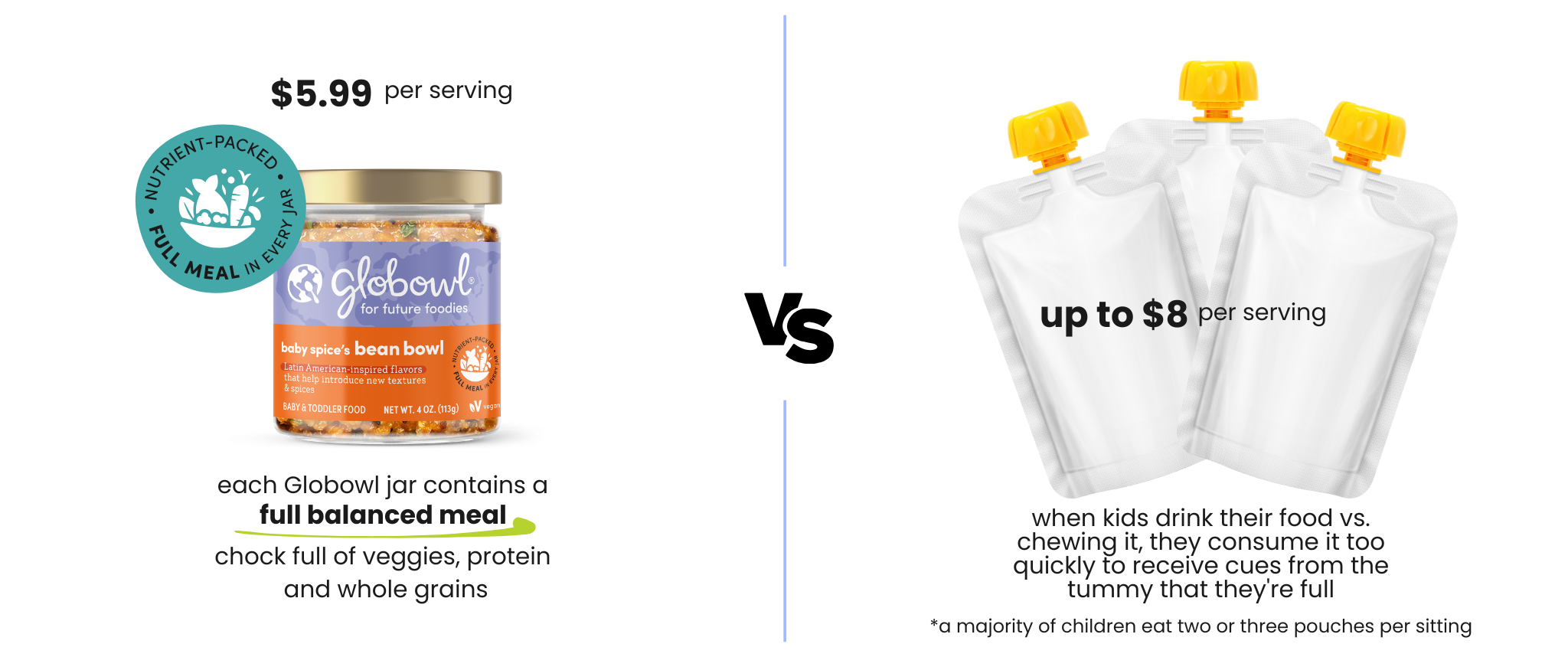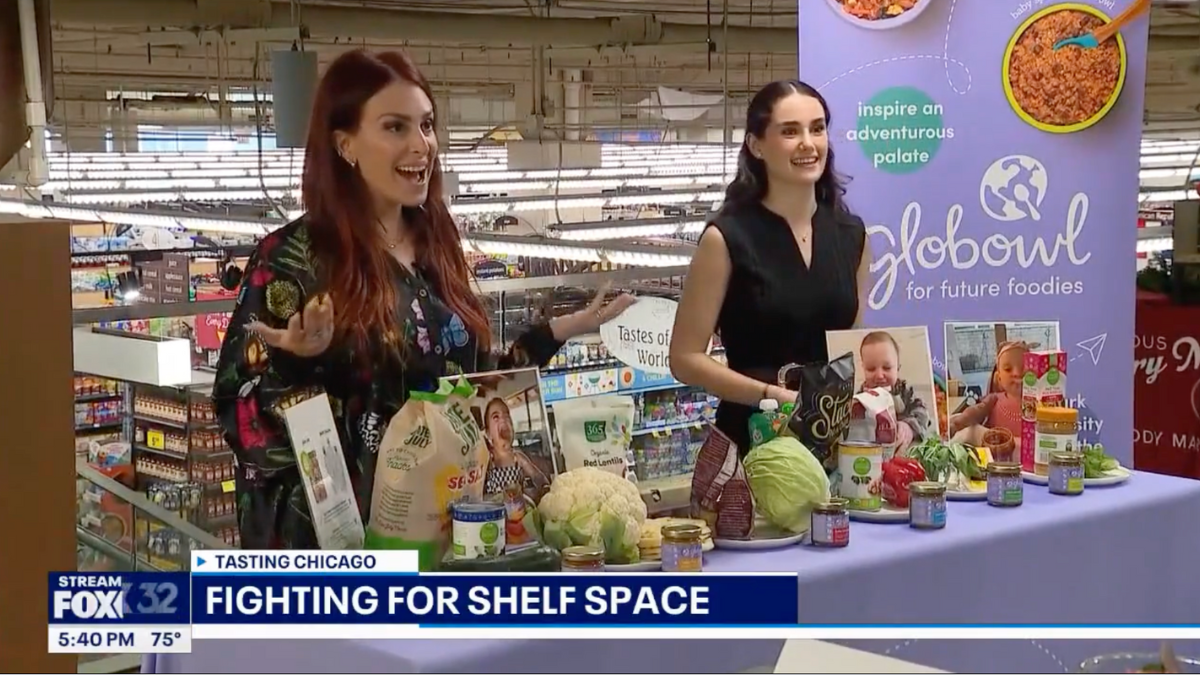As parents, we are always on the lookout for nutritious, convenient, and tasty meal options for our kids. In a market saturated with quick fixes and processed snacks, it can be challenging to find something that ticks all the boxes.
Enter Globowl – a full nutrient-packed meal that is not just convenient but also scientifically designed to support your child’s health and development. Here’s why Globowl stands out from the crowd.
Nutritional Superiority
Globowl is more than just a snack; it’s a carefully crafted blend of essential nutrients, designed to provide your child with everything they need for optimal growth and development. Unlike many pouch-based options, which often lack substantial nutritional content, Globowl ensures your child gets a full, well-rounded meal.
Chewing Matters
One of the key differentiators of Globowl is its texture. Designed to be spoon-fed, Globowl encourages children to chew their food, which is an essential aspect of eating that is often overlooked in modern convenience foods.
The Science Behind Chewing: Chewing is the first step in the digestive process and plays a crucial role in signaling fullness to the brain. When kids chew their food, their bodies produce saliva, which contains enzymes that start breaking down food in the mouth. This process not only aids in digestion but also helps children recognize when they are full. Research shows that chewing activates the release of gut hormones linked to feelings of satiety, helping to prevent overeating.
Avoiding the "Drink Your Meal" Pitfall
Pouches, while convenient, often encourage children to drink their food. This can lead to a disconnect between consumption and satiety. When kids drink their meals, their stomachs don’t get the same signals from the brain that they would if they were chewing. This can lead to overconsumption, as the body doesn’t register fullness in the same way.
Research Insight: Studies have found that liquid calories are less satiating than solid foods, meaning that kids are likely to feel hungry sooner after consuming pouch-based meals. This can lead to increased calorie intake and potential weight gain over time. By providing a meal that requires chewing, Globowl helps ensure your child feels full and satisfied after eating, and slows down meal-time.
Cost-Effective and Convenient
At first glance, a jar of Globowl might seem pricier than a pouch. However, it’s important to consider the value and the quantity. Kids typically consume two or more pouches to feel satisfied (almost 70%! of children, in fact!), which can quickly add up to $8 or more per meal. Globowl, on the other hand, is designed to be a complete meal in a single jar, making it a cost-effective choice in the long run.
A Meal Time Experience
Beyond nutrition, Globowl offers an opportunity to cultivate healthy eating habits. Spoon-feeding allows for mindful eating, where children can engage with their food, enjoy different textures, and develop a better understanding of their hunger and fullness cues. It’s an experience that promotes not just physical health, but also emotional well-being.
In a world where convenience often trumps nutrition, Globowl offers a refreshing alternative. With its nutrient-dense composition, emphasis on chewing, and cost-effective value, it’s a meal choice that supports both the immediate and long-term health of your child. Next time you’re considering a meal for your little one, remember that investing in Globowl is an investment in their future health and well-being. Give them the gift of a wholesome, satisfying meal – because they deserve nothing but the best.
---
**References:**
1. Marciani L, et al. (2001). *Effect of meal viscosity and nutrients on satiety, gastric emptying, and gut hormones*. Am J Physiol Gastrointest Liver Physiol.
2. Flood JE, Rolls BJ. (2007). *Soup preloads in a variety of forms reduce meal energy intake*. Appetite.
3. Mattes RD. (2005). *Soup and satiety*. Physiol Behav.





